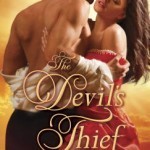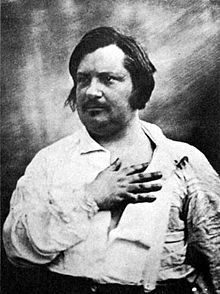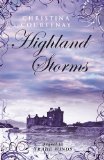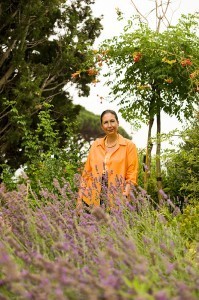Hannah Fielding's Blog, page 149
August 25, 2012
A passion for art
Honoré de Balzac was a coffee addict – drinking up to fifty cups per day to fuel his prolific writing. Baudelaire, Verlaine, Rimbaud and Verlaine were partial to absinthe. Dostoevsky had a gambling habit and reportedly rushed the end of Crime and Punishment because he desperately needed his advance. William S. Burroughs, Elizabeth Barrett Browning and Coleridge took drugs. Hemingway, Dorothy Parker, John Cheever and F. Scott Fitzgerald were alcoholics.
Plenty of writers, then, have compulsions, vices on which they relied to cope with daily life and the demands of creative pursuits. Happily, the only addiction I have is in the Robert Palmer vein (do you remember the 1980s song ‘Addicted to Love’?), and as a romance author, I see nothing wrong with that! But if I had to pick a passion, something that calls to me and I find hard to resist, it would be art.
I grew up in a home full of books about art from different eras and different cultures. My parents were both avid readers and collectors of art, and they taught me that to understand the art of a country one needs to understand the culture of its people. We received every month Apollo, Connaissance des Arts and The Collector’s Guide, all magazines that had to do with the world of art, and I pored over these, fascinated by the many facets of art, from paintings to ceramics, sculpture to tapestries. My parents began taking me along on their trips to the flea market in Alexandria, and there I discovered a world rich with colours and scents and textures – and I learnt the art of haggling! My father also took me to art auctions, where I found the mystery, the intelligence in assessing an object’s value, and the tension in the air during the race to win all quite thrilling.
Today, one of my favourite pastimes is antiquing and rooting around flea markets, of which there are plenty near my home in the south of France. When I go with my husband, who is English, the locals often assume I don’t speak the language well, and are taken aback when they realise I can bargain fluently in their own language! When I was renovating my French home I looked for furniture, and was proud that I managed to talk the vendor of a beautiful eleventh-century Provençal cupboard down to two-thirds of the price. But usually I’m drawn to the glassware, and I suppose you could say that is my weakness. I love to collect glassware that catches my eye – I find it very hard to walk away from a piece that is calling to me. As the great writer Johann Wolfgang von Goethe wrote, ‘Collectors are happy people.’
Art, for me, is both inspiration and comfort. When I am researching a book, I visit museums and galleries in the setting, and I look at the works of artists depicting the area. There is something inherently visual about the way my imagination works. So when I am struggling to find the right word or to picture a scene in my mind, I would take an afternoon immersed in art any day over a coffee, a glass of wine or a flutter on the horses. As French Impressionist Edgar Degas said, ‘Art is vice.’
August 24, 2012
The Devil’s Thief by Samantha Kane
A fun, sizzling, rollicking good read.
London, 1817. Julianna Harte is the daughter of a reformed high-class thief and the founder of a home for abandoned children in London who is desperate to raise funds to stop her home closing – so desperate, in fact, that she resorts to robbery. She breaks into the home of her neighbour, Alasdair Sharpe, to steal his valuable pearl, but there she meets her match in the form of Alasdair – handsome, domineering and – oh my goodness – naked. He offers a proposition: one night with him in return for the pearl. Julianna agrees, but it is her instant attraction to the man that drives her. From there, the story twists and turns through high passion and high drama, as Julianna wrestles with her conscience over her immoral act, and both characters struggle with their feelings toward the other.
I loved the fast pace of this book, and the detailed plot which kept me turning pages (I read it in one sitting). There’s a lightness to the writing – a sense of fun and energy – that is compelling. The setting of London at the time is a great backdrop, and characters are likeable. My favourite is Wiley, a young street-wise man who takes a shine to Julianna and proves himself to be more of a man than many of his upper-class counterparts. I also liked Julianna, for her moral struggle and her courage.
What stands out most in the book, though, is the very passionate encounters between Julianna and Alasdair. From the outset, the writing is extremely steamy (and there is some strong language)! Here’s one of my favourite moments:
He broke the kiss. “Julianna,” he said desperately, pressing kisses along her cheekbone and then her hairline. “Juli.” His voice was ragged. “You are the very air I breathe, the blood in my veins. All that is right in my world. If you ever do something so bloody stupid again, I will turn you over my knee and spank the living daylights out of you.”
Julianna burst into surprised laughter, but he could hear how shaky it was. “Promises, promises,” she whispered. “Perhaps you should teach me a lesson right now?”
Overall, I enjoyed the book and will be looking out for the next in the series.
The Devil’s Thief will be published in November; check Amazon for pre-order details.
August 23, 2012
Recipe: Kentish pudding pie
A keen cook, I love to explore regional recipes – from places I visit and from the area in which I live: the south of France and Kent. Today I am going to share with you a recipe for Kentish pudding pie, which is a little like a baked cheesecake or custard pie. It’s not well-known outside of Kent, but this recipe has been popular for many years in the area surrounding Folkestone, near my home.
Kent pudding pie is also known as Kent Lenten pie, because it was first made as a dessert for the meat-free Lent period.
Ingredients
100g ground rice
125g sultanas
150ml double cream
2 eggs
250ml milk
75g caster sugar
Enough shortcrust pastry to line a 20-cm flan dish or tin
1/4 teaspoon fresh nutmeg
Preheat the oven to 200°C/400°F/Gas Mark 6.
Grease the dish, line with pastry and bake for 10–15 minutes. Remove from the oven and allow to cool a little.
Turn down the oven to 190°C/375°F/Gas Mark 5.
Whisk together the eggs and sugar.
Combine the cream and milk, place in a saucepan and bring to a gentle boil.
Whisk in the egg-and-sugar mixture.
Heat until the mixture is thickening.
Stir in the ground rice.
Fill the pastry case. Dot sultanas evenly over the top, and grate on a light dusting of nutmeg.
Bake until set and golden (keep checking it – from 10 to 20 minutes).
I like to serve the tart warm with home-made ice-cream (the nutty taste of brown bread ice cream compliments well), and compote made from apples from my garden with a touch of cinnamon.
Variations: Omit the nutmeg and add lemon zest instead. Try raisins or currants instead of sultanas. Add the nutmeg to the mixture instead of sprinkling over. Make six individual desserts using small tart tins.
August 21, 2012
Morning glories
August 20, 2012
Favourite poem: ‘La panthère noire’ (The Black Panther)
Each month on this blog I share an English translation of a poem by nineteenth-century French poet Leconte de Lisle. His poetry was a great source of inspiration for the descriptions and imagery in my writing, colourful and visual and vivid as it is. The poem I am sharing with you today is entitled ‘La panthère noire’ (The Black Panther), and it is one of my favourites.
Leconte de Lisle was one of the esteemed French writers whose works I studied at school – a French convent school. At the age of eleven I was asked to recite this poem at the end-of-year assembly. Even to this day, I can hear myself carefully enunciate each perfect word and feel myself swept away in the lulling rhythm to a faraway, exotic world. With such poems forming the basis of my literature education, it is no wonder I grew up to have a passion for travelling.
In poems such as this one, I love de Lisle’s appeal to each of the senses, which allows us to experience his words at every level. Consider:
Sight: a pink glow; sparkling blue summit; the thick grass steams in the morning sun
Smell: a wave of strong sweet odours/Full of feverishness and delight; The blithe greenery…Perfumes the ground at each of her steps
Touch: the butterflies and the buff-coloured bees/ Vie with her lithe back, brushing it in their flight
Taste: the lychee-trees with their crimson fruit, and from the cinnamon-trees
Hearing: the woken bamboos where the wind beats its wings; Fresh sounds arise in their thousands
I also admire his original, inventive imagery – creating descriptions that are unusual and invite consideration, like fiery drops, the gleaming bones, crimson cactus, the necklace of the night, virgin forests, buff-coloured bees, the air scorches and the measureless light.
Have you ever been in an amazing setting and wished you could somehow capture your reaction, your awe at the beauty surrounding you, the humbling power of nature? In this poem, which presents a snapshot of a wild and beautiful world, Leconte de Lisle successfully infuses that feeling into words. He was, in the true sense of the word, a visionary, and he sets an example to all writers in how best to convey ‘the essence of place’.
The Black Panther
A pink glow spreads across the cloudbanks;
The horizon is turned jagged, towards the east, by a quick flash of lightning;
And the necklace of the night, like unthreaded pearls,
Is shed down, and falls into the sea.
A whole sweep of the sky arrays itself in gentle flames
Which fasten upon its sparkling blue summit.
A flank trails down and turns to red the sheets
Of rain in fiery drops.
From the woken bamboos where the wind beats its wings,
From the lychee-trees with their crimson fruit, and from the cinnamon-trees
The dew twinkles like showers of sparks;
Fresh sounds arise in their thousands.
And from the heights and woods, from the flowers, from the thick mosses,
In the mild and delicate air, suddenly opening out,
There swells a wave of strong sweet odours,
Full of feverishness and delight.
Through the paths lost in the bottom of the virgin forests,
Where the thick grass steams in the morning sun,
Along the streams of running water hemmed in by their steep banks,
Under green vaults of rattan-palms,
The queen of Java, the black huntress,
At dawn, comes back to her lair where her cubs,
Amidst the gleaming bones whimper in anguish,
One cowering under another.
Wary, with eyes as sharp as arrows,
She slinks forward, scanning the shadow of the heavy branches.
A few spots of blood, scattered, and all of them fresh,
Stain her velvet coat.
She is dragging behind her a remnant of her game,
A piece of the fine stag which she ate in the night;
And on the sprouting moss a frightful trail
Red, and still warm, follows her.
Round-about, the butterflies and the buff-coloured bees
Vie with her lithe back, brushing it in their flight;
The blithe greenery, out of its thousand baskets,
Perfumes the ground at each of her steps.
The python from the midst of the crimson cactus,
Uncoils its scales, and, an inquisitive witness,
Raising its flat head above the thicket,
Watches from afar as she goes by.
Under the tall fern she silently creeps,
Slipping between the mossy trunks she disappears.
The sounds die away, the air scorches, and the measureless light
Lulls the sky and forest to sleep.
La panthère noire
Une rose lueur s’épand par les nuées;
L’horizon se dentelle, à l’Est, d’un vif éclair;
Et le collier nocturne, en perles dénouées,
S’égrène et tombe dans la mer.
Toute une part du ciel se vêt de molles flammes
Qu’il agrafe à son faîte étincelant et bleu.
Un pan traîne et rougit l’émeraude des lames
D’une pluie aux gouttes de feu.
Des bambous éveillés où le vent bat des ailes,
Des letchis au fruit pourpre et des cannelliers
Pétille la rosée en gerbes d’étincelles,
Montent des bruits frais, par milliers.
Et des monts et des bois, des fleurs, des hautes mousses,
Dans l’air tiède et subtil, brusquement dilaté,
S’épanouit un flot d’odeurs fortes et douces,
Plein de fièvre et de volupté.
Par les sentiers perdus au creux des forêts vierges
Où l’herbe épaisse fume au soleil du matin;
Le long des cours d’eau vive encaissés dans leurs berges,
Sous de verts arceaux de rotin;
La reine de Java, la noire chasseresse,
Avec l’aube, revient au gîte où ses petits
Parmi les os luisants miaulent de détresse,
Les uns sous les autres blottis.
Inquiète, les yeux aigus comme des flèches,
Elle ondule, épiant l’ombre des rameaux lourds.
Quelques taches de sang, éparses, toutes fraîches,
Mouillent sa robe de velours.
Elle traîne après elle un reste de sa chasse,
Un quartier du beau cerf qu’elle a mangé la nuit;
Et sur la mousse en fleur une effroyable trace
Rouge, et chaude encore, la suit.
Autour, les papillons et les fauves abeilles
Effleurent à l’envi son dos souple du vol;
Les feuillages joyeux, de leurs mille corbeilles;
Sur ses pas parfument le sol.
Le python, du milieu d’un cactus écarlate,
Déroule son écaille, et, curieux témoin,
Par-dessus les buissons dressant sa tête plate,
La regarde passer de loin.
Sous la haute fougère elle glisse en silence,
Parmi les troncs moussus s’enfonce et disparaît.
Les bruits cessent, l’air brûle, et la lumière immense
Endort le ciel et la forêt.
With my heartfelt thanks to John Harding for his wonderful translation.
If you would like to know more about this French poet, take a look at this article about the centenary of his birthday: http://www.readbookonline.net/readOnLine/57444/.
August 18, 2012
Favourite writer: Honoré de Balzac
Although I spoke English at home with my parents, I was given a French education. I had a French/Italian governess, I went to a French convent school and I graduated from university with a BA in French Language and Literature. I think that the way I write has been much influenced by the very flowery use of words in French prose. I have spent many hours lost in a thesaurus, fascinated by the different nuances of words, and it is with great joy that I try to choose the right word to convey to the reader the description of a place, a scene and the emotions of my characters.
One of the classic French writers whose works have had a deep effect on me is Honoré de Balzac. Balzac (1799–1850), a novelist and playwright, was regarded as the founder of realism in the nineteenth century because of his ability to observe and create multifaceted characters, situating them in surroundings that were so thoroughly described that every minute detail counted. He is most remembered for La Comédie Humaine, which comprises a series of short stories and novels that depict life in France at the time.
What I find fascinating about Balzac and his works is his commitment to every single detail. Take this sentence, for example – consider the careful thought that has gone into every word choice and placement:
‘The more he saw, the more he doubted. He watched men narrowly, and saw how, beneath the surface, courage was often rashness; and prudence, cowardice; generosity, a clever piece of calculation; justice, a wrong; delicacy, pusillanimity; honesty, a modus vivendi; and by some strange dispensation of fate, he must see that those who at heart were really honest, scrupulous, just, generous, prudent or brave were held cheaply by their fellow-men.’
Balzac worked unbelievably hard, during the night often and for fifteen hours or more. He drove his publishers mad with his obsessive revision, over and over, of text. And he took setting the scene so far as to write twenty pages of description of some locations – having travelled to the places and studied them carefully. Such dedication!
He is widely acclaimed as being one of the great French writers. At his funeral (which was attended by all the notable writers of the time), pallbearer Victor Hugo said, ‘We have a people in black because of the death of the man of talent; a nation in mourning for a man of genius.’ The great sculptor Auguste Rodin immortalised the writer in a monument which stands in Paris. Balzac’s legacy is far-reaching; his works have inspired many celebrated writers since, from Proust and Dickens to Poe and Dostoyevsky, Flaubert and Henry James to Faulkner and Kerouac.
I have read all of the Balzac’s books more than once, and every time I have discovered some new aspect which I had not been aware of before. Fascinating! When I write, I am inspired by Balzac and his careful, measured, dedicated approach to writing:
‘The man who can but sketch his purpose beforehand in words is regarded as a wonder, and every artist and writer possesses that faculty. But gestation, fruition, the laborious rearing of the offspring, putting it to bed every night full fed with milk, embracing it anew every morning with the inexhaustible affection of a mother’s heart, licking it clean, dressing it a hundred times in the richest garb only to be instantly destroyed; then never to be cast down at the convulsions of this headlong life till the living masterpiece is perfected which in sculpture speaks to every eye, in literature to every intellect, in painting to every memory, in music to every heart! – this is the task of execution. The hand must be ready at every moment to work in obedience to the mind.’
August 17, 2012
Highland Storms by Christina Courtenay
From the blurb:
Betrayed by his brother and his childhood love, Brice Kinross needs a fresh start. So he welcomes the opportunity to leave Sweden for the Scottish Highlands to take over the family estate. But there’s trouble afoot at Rosyth in 1754 and Brice finds himself unwelcome. The estate’s in ruin and money is disappearing. He discovers an ally in Marsaili Buchanan, the beautiful redheaded housekeeper, but can he trust her?
Marsaili is determined to build a good life. She works hard at being a housekeeper and harder still at avoiding men who want to take advantage of her. But she’s irresistibly drawn to the new clan chief, even though he’s made it plain he doesn’t want to be shackled to anyone.
And the young laird has more than romance on his mind. His investigations are stirring up an enemy. Someone who will stop at nothing to get what he wants – including Marsaili – even if that means destroying Brice’s life forever …
What a treat this book was for a reader such as me who loves fiery, passionate, realistic historical fiction that gives a real sense of the era in which it is set.
The setting of the book is wonderful – I love Scotland: the landscapes, the people, the history, the culture, the accent. I really enjoyed the vivid descriptions, such as this one:
It was situated right next to the loch, dominating a peninsula that jutted out as if pointing towards a small island in the middle of the water. It was more like a keep of many towers than an ordinary manor house. Built of grey stone hewn from the surrounding hills, it looked forbidding, but Brice knew the interior was comfortable and welcoming… The loch’s surface was almost still today, reflecting the summer sky and the surrounding hills perfectly. Bruce felt an unexpected jolt of pride as he gazed down at his new domain – as far as the eye could see was Rosyth land and it belonged to him now.
I was fascinated to find out more about the historical period, and there is so much carefully researched context woven into the fast-moving, suspense-full plot. The characters are multifaceted and not without the ability to surprise, and the relationships are vivid and frequently touching. I love the strength of the characters – especially Marsaili (super name) who is a heroine with whom a twenty-first-century reader can empathise. I also enjoyed the romantic elements of the book, and I think the author shows great skill, maturity and thought in how she handles intimate moments: writing that makes you sigh dreamily rather than blush or cringe.
In all, I can see why this book won the 2012 Best Romantic Historical Novel of the year award from the Romantic Novelists’ Association, and I highly recommend it.
Highland Storms is available now from Amazon; click on the book cover below to visit the store.
August 16, 2012
Going to extremes for love
I adore stories of people who are head over heels in love getting carried away, doing crazy things, getting lost in the sensation of love. I wasn’t one of those people who thought Tom Cruise was strange to leap over a sofa while declaring his feelings for Katie on The Oprah Show; I thought, how wonderful, look how in love he is!
This week I had a huge smile on my face, then, when I read of the British couple who’ve held 22 (to date) wedding ceremonies across the UK and North and South America (see http://www.dailymail.co.uk/femail/article-2185283/British-couple-celebrate-love-getting-married-22-times-world.html?ITO=1490). How wonderful is that! This is a bride who gets to wear a lot of wedding dresses…
I was inspired by this cheery tale amid the usual doom and gloom of the papers to hunt out some other extraordinary stories of people showing their love. I hope these brighten your day; but perhaps do not inspire you!
King Edward VIII abdicated the throne of England in order to marry American socialite and two times divorcée Wallis Simpson. They remained together until Edward’s death.
King Henry VIII first split from the Catholic Church and set up a whole new church just so he could annul his marriage to Catherine of Aragon and marry Anne Boleyn instead. It didn’t end well!
Art and Nan Kellam moved to an uninhabited island off the coast of Maine in 1949 so that they could be alone with each other. They remained there together until 1985.
Angelina Jolie bought her husband, Brad, a little something to say ‘I love you’. An actual waterfall.
When the love of his life, Persian princess Mumtaz Mahal, died, Emperor Shah Jahan erected a monument in her memory. The Taj Mahal is the world’s largest mausoleum, and took 22 years to build.
One lovestruck young man named Todd set himself on fire (while wearing a flame-retardant suit, thank goodness), and then proposed to his girlfriend with the words: ‘You make me hot. Will you marry me?’
A Bristol man made a spoof music video in which he proposed to his girlfriend, then had it screened at a cinema. His girlfriend was rather shocked by the sight of her boyfriend on the big screen, singing in underpants, but she said yes! (See http://www.youtube.com/watch?v=zEkFX_GgrY4 if you’re in the mood for a giggle).
And now I have Michael Bublé’s version of ‘Crazy Love’ stuck in my head…
August 15, 2012
Book review: A Wild Night’s Bride by Victoria Vane
A wonderful novella! From the blurb: What happens when a struggling actress and a grieving widower come together in a night of unbridled debauchery orchestrated by a bored and machinating rake? With the devil in charge… there will be hell to pay!
Confidently situated in Georgian England, with a believable and well-researched historical setting, characterisation and dialogue. It is fast-paced, colourful, amusing and delightfully sensual, and the description is wonderfully visual. I loved the strong, uncompromising characters and the grittiness of their actions and choices, which felt true to the era. I found myself emotionally invested in the story, and hoping for a satisfying ending (which was neatly delivered).
What I most enjoyed was Victoria’s expert juxtaposition of passionate, erotic content with mundane action, which added to the thrill of the sexual encounters. And goodness me, what steamy sequences!
I am looking forward to reading the next titles in this Devil DeVere series; the next one is cleverly set up in A Wild Night’s Bride, meaning I’m keen to read on.
In all, I heartily recommend this novella for readers who enjoy fun, sexy historical romps.
A Wild Night’s Bride is available now from Amazon; click on the book cover below to visit the store.










